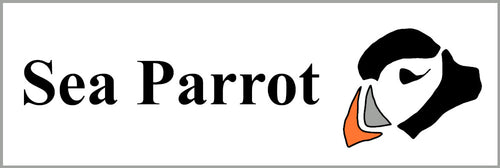I've made a couple of these cushions and they always get admired. It's a lovely simple way to make something featuring your favourite animals and would also make a perfect gift.
I generally make envelope cushions because I can't be bothered to insert a zip but you could adapt this pattern and put in a zip if you wish.
This cover would fit an 18 inch square cushion pad but you could make it smaller or bigger by adjusting the thickness of the outer 'frame' or sashing.
For this cushion I used:
1 large 7 inch animal square (greater spotted woodpecker)
4 smaller 4 inch animal squares
2 fat sixteenths (or 1 fat eighth of the same fabric)
1 fat quarter
White cotton fabric, for the lining, that is the same size as the finished front cover (For mine, approx. 18 1/2 inches square).
Fabric for the back. I used a plain brown. I used approximately 26 inches x 18 1/2 inches but have a bigger piece to give a bit of leeway.
You may wish to quilt your front cover and so would also need a piece of wadding bigger than 18 1/2 inches square.
1. You are probably going to wash a cushion cover and so it is a good idea to wash the fabrics before starting so that they are pre-shrunk (my fat quarters are pre-washed but it is probably best to wash them again). Wash the animal strips and squares separately from the coloured fabrics so that the white does not discolour. They can all be washed at 30 degrees by hand or in a machine. If you are washing them in the machine, it is best to put them in a tied cotton bag or pillow case to reduce fraying. Press whilst damp.
2. Cut the smaller animal strip into approximately 4 inch squares, using the marks as a guide. Then cut each square accurately into 3 1/2 inch squares, making sure that the animal motif is in the centre of the square.
3. Cut the large animal square down into a 6 1/2 inch square, again making sure that the animal motif is in the centre.
4. Take the two fat sixteenths and cut 2 strips, 3 1/2 x 6 1/2 inches, from each.
5. Arrange your pieces similar to below:

6. Sew each of the three rows together at the sides using a 1/4 inch seam.

7. Press the seams away from the animal squares. This allows for 'nesting' of the seams when the rows are sewn together, which reduces bulk.

8. Sew the three rows together, trying to match the corners as closely as possible.

9. I pressed the seams open this time to reduce bulk, which is important in a cushion that you might put your head on (see later photo of back).
10. Take the fat quarter and cut it into strips, 3 1/2 inches wide. If you need your cushion to be smaller or bigger, this is where you can make adjustments by cutting the strips fatter or thinner, making sure you have enough fabric!
11. Cut two of these strips so that they are just wider than the width of the pieced patchwork.

12. Sew one strip to the top and one to the bottom of the patchwork. Trim.

13. Cut 2 of the strips so that they are just longer than the height of the pieced patchwork.

14. Sew one strip to each side of the patchwork. Trim.

15. Press the seams open.

16. The front is complete. To reduce fraying, it is a good idea to make a lining for the front. Cut a piece of white cotton fabric the same size as your front cover. It should be approximately 18 1/2 inches square. Leave that for now and make the back.
Alternatively, you could quilt your cover by placing a piece of wadding between the front and lining, and then quilting by hand or machine.
17. Cut the fabric you have for the back of the cushion into two pieces. One piece should be 12 inches x 18 1/2 inches and the other 14 inches x 18 1/2 inches
18. One edge of each fabric piece needs to be finished (hemmed). Fold over and press 1/4 inch along one of the long sides (18 1/2 inches) of each piece. Then fold over and press those a further 1/2 inch.

19. Sew the hems 1/8th inch from the edge of the fold (between the 1/4 and 1/2 inch) all the way along both pieces (see photo below).
20. Now you need to assemble your envelope cushion. Place the white lining down first and then the front cover, facing upwards, directly on top. Now place the smaller back piece on top, at the top end of the front, right side facing downwards (right sides together) and the hem you've just sewn towards the middle. Lastly, place the larger back piece on top, at the bottom end, right side down and hem towards the middle.
In the photo, I made a mistake and put the larger piece on first, and then forgot to take another photo when corrected. Sorry.

21. Pin the four layers together in place all the way around the edge and then sew all the way around with a 1/4 inch seam. Make the corners more robust by going backwards and forwards a couple of times there.
22. Trim off the corners and then zig zag stitch both sides of the seam all the way around to prevent fraying. Turn the cushion cover the right way round.
It's finished.



